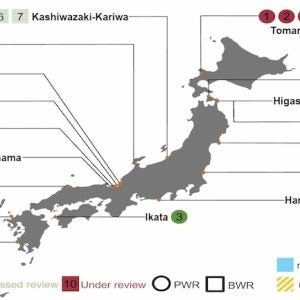Outside Japan the number of installations remains negligible. In Europe, for instance, progress has been slow, with a number of casualties among developers along the way, a notable recent example being CFCL, which went into administration last year.
The Japanese dominance to date has been down to strong government support and significant subsidies. They have also been working at it for a long time, since about 1996. A driver in Japan is the efficient fuel use promised by micro CHP, with LNG imports currently accounting for about 97% of national energy requirements.
In 2008/2009 Japanese gas companies and fuel cell developers embarked on a joint initiative to sell fuel cell based micro CHP units into the residential sector, "ahead of other countries", adopting the name ENE-FARM for these domestic systems.
The number of installations has grown steadily since then.
In 2013, household fuel based micro CHP was specifically recognised as a key technology in the "Japan is Back" revitalisation strategy.
A key player in all of this has been Panasonic, which set up a dedicated development team in 1999 and is now into the fourth generation of its PEM (proton exchange membrane) based micro CHP system (released in 2015). It has a market share in the Japanese domestic market of about 50%.
The Panasonic system achieves a fuel use efficiency of about 95% (LHV) overall, but it is floor standing, as opposed to wall mounted, and so far installations in Japan have been in detached houses and condominiums. The basic data for the 2015 model (see illustration) is summarised in the table.
To fully address the Japanese market future units will probably need to be more compact and also cheaper as subsidies are to be phased out.
Viessmann of Germany has been working with Panasonic on a European version, launched in April 2014 and called the Vitovalor 300-P, described as "suitable for a utility room such as a basement". This version is designed for a power output of 750 W (constant) and 1 kW of heat, 60 000 hours durability, 4000 start/stops.
(Originally published in MPS February 2016)






